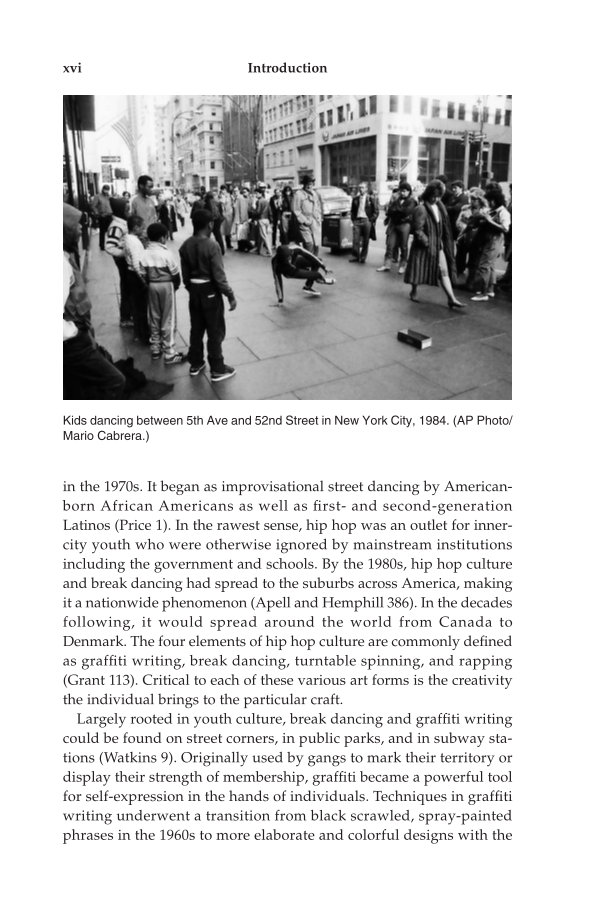in the 1970s. It began as improvisational street dancing by American- born African Americans as well as first- and second-generation Latinos (Price 1). In the rawest sense, hip hop was an outlet for inner- city youth who were otherwise ignored by mainstream institutions including the government and schools. By the 1980s, hip hop culture and break dancing had spread to the suburbs across America, making it a nationwide phenomenon (Apell and Hemphill 386). In the decades following, it would spread around the world from Canada to Denmark. The four elements of hip hop culture are commonly defined as graffiti writing, break dancing, turntable spinning, and rapping (Grant 113). Critical to each of these various art forms is the creativity the individual brings to the particular craft. Largely rooted in youth culture, break dancing and graffiti writing could be found on street corners, in public parks, and in subway sta- tions (Watkins 9). Originally used by gangs to mark their territory or display their strength of membership, graffiti became a powerful tool for self-expression in the hands of individuals. Techniques in graffiti writing underwent a transition from black scrawled, spray-painted phrases in the 1960s to more elaborate and colorful designs with the xvi Introduction Kids dancing between 5th Ave and 52nd Street in New York City, 1984. (AP Photo/ Mario Cabrera.)
Document Details My Account Print multiple pages
Print
You have printed 0 times in the last 24 hours.
Your print count will reset on at .
You may print 0 more time(s) before then.
You may print a maximum of 0 pages at a time.

































































































































































